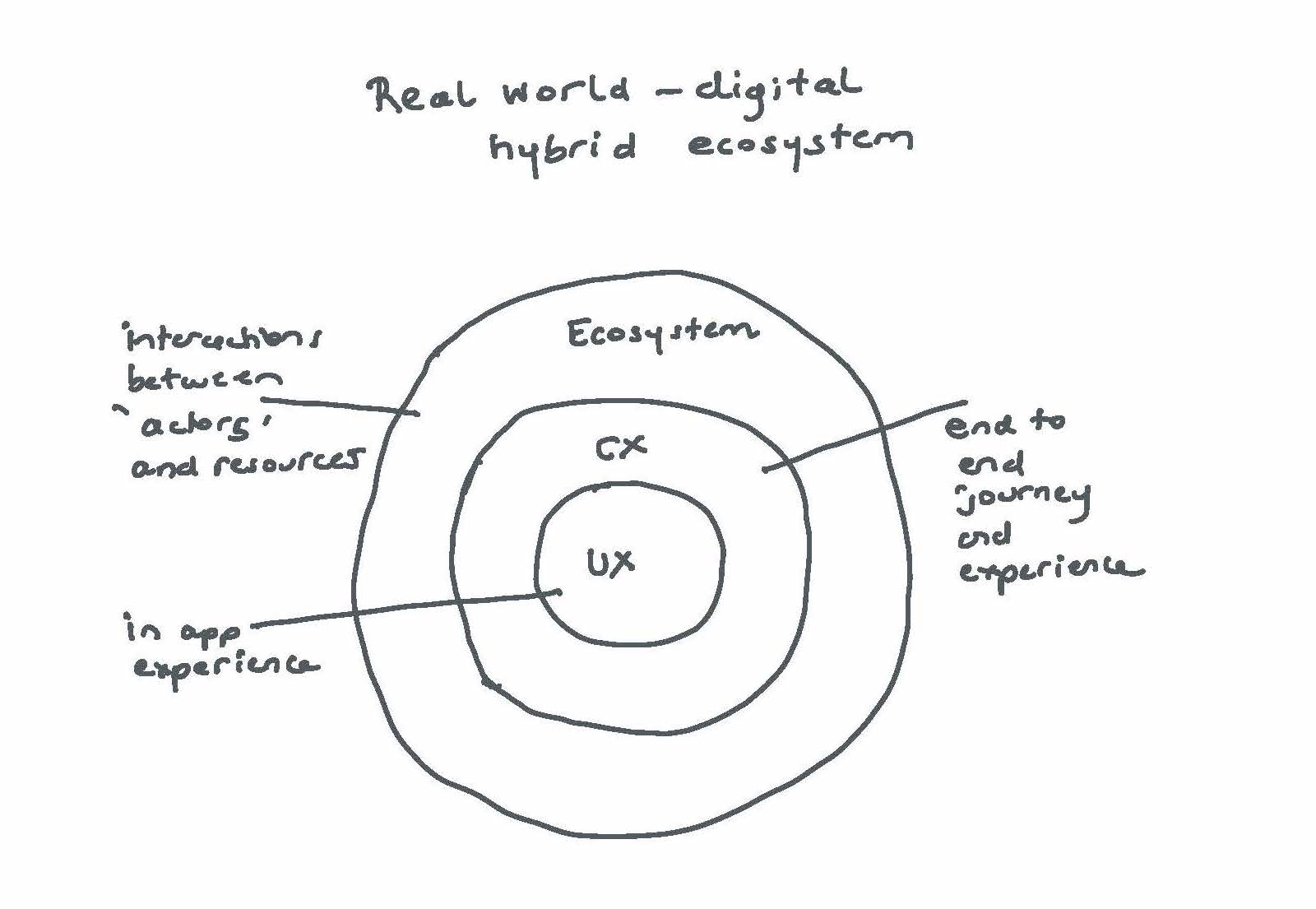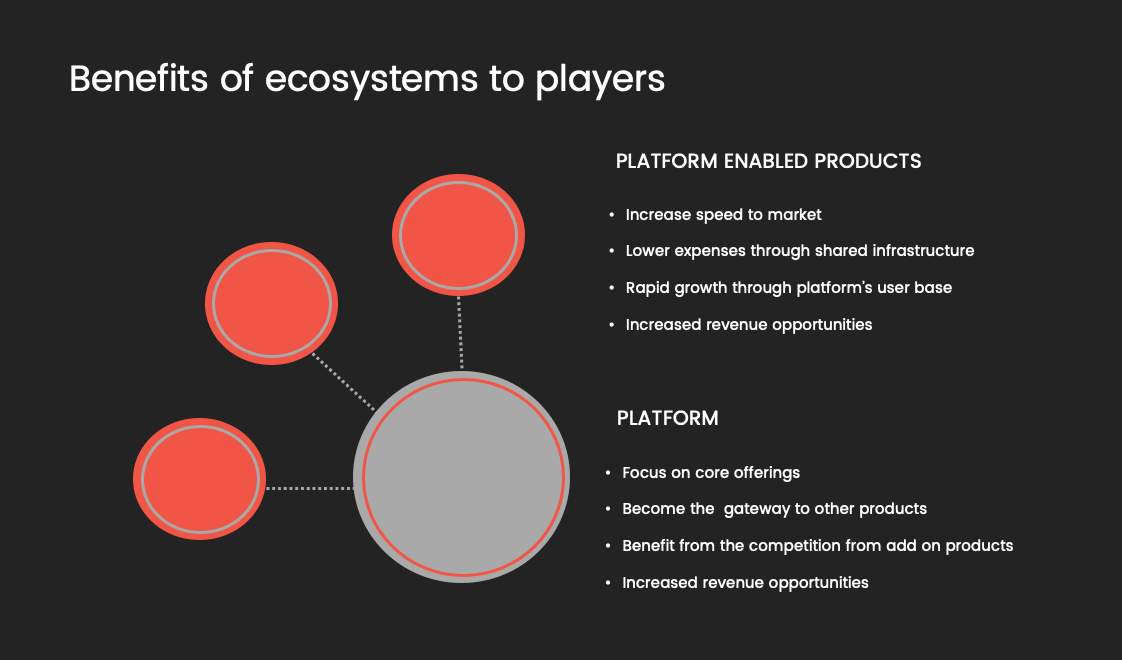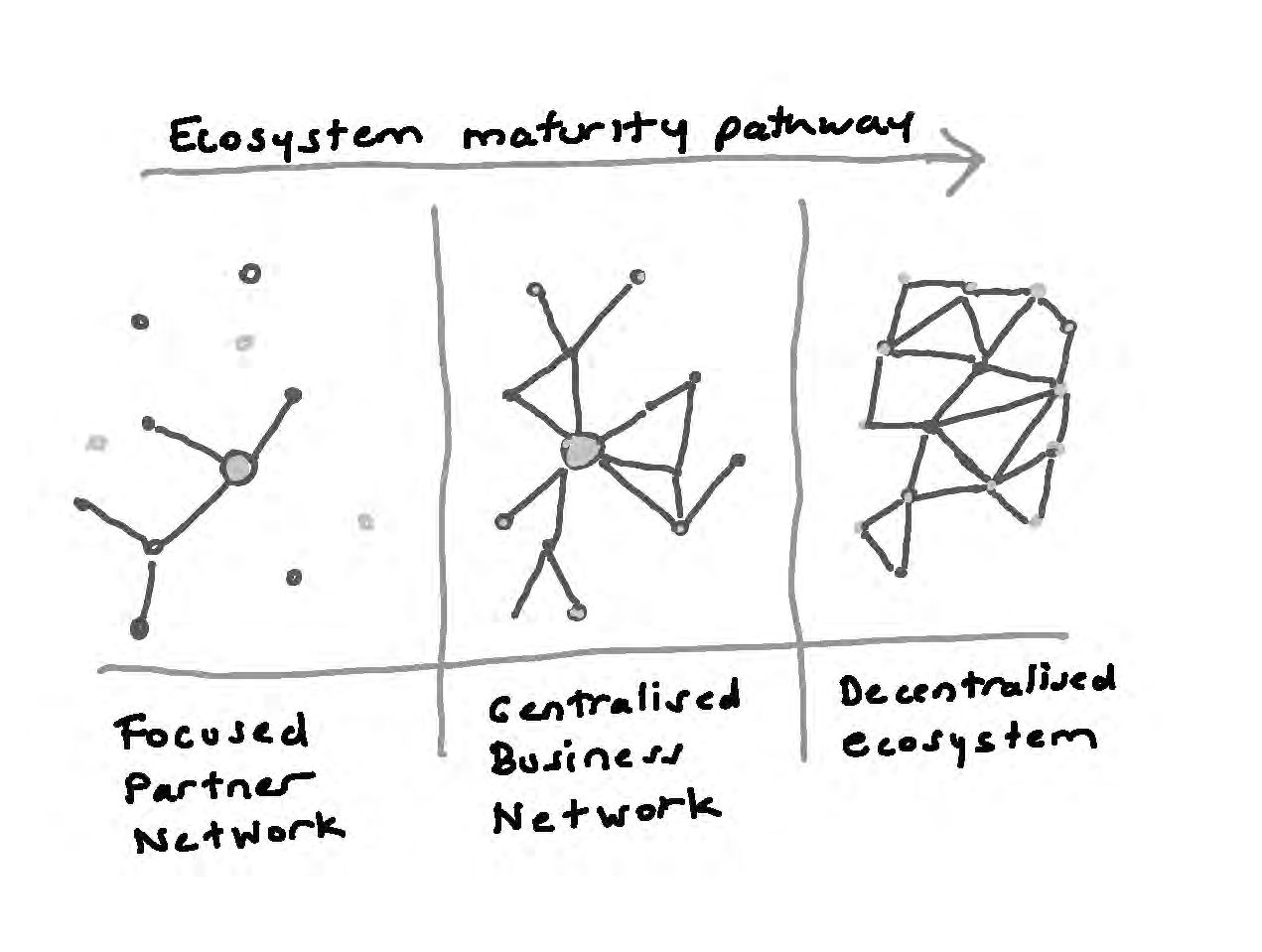Building strategic partneships within your ecosystem


Written by: Louise Kelly
People leader, research, experience & design

Written by: Louise Kelly
People leader, research, experience & design
Ecosystems present many new opportunities for business, and for many businesses are their only way to succeed. Ecosystems bring opportunities businesses cannot realise on their own or would be difficult to resource financially or in reasonable timeframes. Ecosystem partnerships offer a “greater than the sum of the parts“ strategic uplift such as improved speed to market, extended market reach and access to proven innovation.
The role of partnerships in ecosystems are key to growth. Today, leading tech companies such as Salesforce and Slack hold partnerships as the key driving force of their business value;
“We are building for a future where Slack is dwarfed by the aggregate value of the companies built on top of it. This is our success as a platform — when the value of the businesses built on top of us is, in sum, larger than we can ever be.”
What are ecosystems
Ecosystems are a network of relationships, co-creating value to serve the needs of an end beneficiary.
Ecosystems are comprised of products and players who have a shared infrastructure of resources. These resources often sit within platforms, a technology which can be accessed by an API, application protocol interface, (think Trello and WordPress) and platformed enabled products that value add to the platform via additional features and benefits, (think Trello powerups and WordPress plugins.)
Ecosystems are disruptive
Ecosystems are disruptive, breaking down traditional monolithic organisations and products, by connecting them to other entities and products to co create value. The disruptive impact of ecosystems is changing the landscape, as organisations become platforms, products and services become ecosystems and a new class of micro producers and platform enabled products emerge.
API’s are the connective tissue of ecosystems
API’s, application programming interface, allow players within an ecosystem to access existing functionality without using their own resources to duplicate it. API’s are connecting players within a platform based ecosystem. This connection has impacted how software is being designed and used. Software has become more niche, meaning people are jumping in and out of specific tools and turning to platforms to allow them to access these niche tools in a single interface (think Xero, Zoom, MS Teams and Salesforce add-ons.)
Ecosystems emerge to serve a shared purpose
Ecosystems are naturally occurring networks, that are self-organising, based on shared values and aligned capabilities. They are organised around a common purpose so compelling, they overcome natural friction and conflicts between systems and players. Today, technology accelerates the formation of ecosystems by increasing the opportunities for connection and exchange of value through API’s and platforms, multiplying opportunities and opening new marketplaces.
Partnering in an ecosystem has many benefits
Ecosystems bring together a network of partners, add-ons, and affiliates to boost a company’s core technologies, product offerings and acquisition channels.
Through partnerships within an ecosystem, a product or organisation can;
- Open up competition between vendors in app marketplaces, allowing partners selection of the best in class /best aligned/best fit option
- Achieve rapid growth through a partner’s user base
- Become the habit forming ‘go to’ by becoming the platform for other products
- Increase efficiencies by allowing businesses to focus on customer attuned core offerings rather than build monolithic products
- Increase speed to market by accessing a third party’s audience, user or customer base
- Increase revenue opportunities by distribution through new partner channels
- Achieve lower expenses through shared infrastructure
Finding your ecosystem
Finding your optimum ecosystem starts with identifying the value add to the end beneficiary of your targeted product and service. From there it is important to map out all the players and resources that come together to deliver the desired outcome to the end beneficiary. Context is considered by looking wider into adjacent ecosystems, which often expand and merge, impacting on value created within the ecosystem. Ecosystems also need to be referenced to meta ecosystems and micro ecosystems. Adjacent meta and micro ecosystems can be mapped as moving parts within a greater whole.
Establishing partnership fit within your ecosystem
Investing in ecosystem partnerships can have long term horizons, typically 2 to 5 years. Finding a sustainable partnership fit is critical to success, here are some questions that need answers to make informed decisions around partnership fit;
- Will the ecosystem realise the shared objectives?
- Does it have the necessary resources to achieve the desired outcome?
- Is there a strong values alignment?
- Will it endure for a 5 year minimum horizon?
Once a fit has been determined, value created in the ecosystem can be assessed using the VRIO test;
- Value- is there significant value created from the ecosystem?
- Rarity- are the resources and value created scarce?
- Imitability – is it difficult to imitate?
- Organisation – does the ecosystem have the resources in place to create the value?
3 key types of partnerships in an ecosystem
There are 3 key types of partnerships; strategic, tech and channel.
Strategic partnerships, are those long term partnerships based on shared big picture goals. These partnerships typically involve co creation based on a shared product roadmap. Slack is so committed to promoting these partnership opportunities they publish their roadmap in the public domain. https://trello.com/b/ZnTQyumQ/slack-platform-roadmap
Tech partnerships, these are the platforms and platform enabled products which are integrated. Slack promotes tech partnerships by publishing Ideaboard, a list of ideas for tech partners generated from their own customer research.
Channel partnerships, these partners offer specialised services such as support or sales that will enable a platform to scale. Channel partners are renumerated in different ways (Marketo has a directory for referring partners while Shopify pays introducing agencies).
Partnerships require a mindset shift
Becoming a successful partner in an ecosystem requires a mindset shift. Those platform businesses who act as servant leaders, will provide the fertile ground to grow their business through the efforts of their partners. Engagement needs to move beyond the boundaries of the organisation and businesses need to become very clear about their niche. Their product design and development focus needs to broaden to a platform and ecosystem focus.
Businesses that fail to open themselves up to transform from products to platforms may well experience the humbling defeat Steve Jobs encountered on the release of the closed iPhone. After a year of defending an Apple exclusive product ecosystem, he saw the error of his ways and opened the App store. The value of this pivot can be measured in 2021 as by the 30% of year on year growth and the 1.96 million apps available for download in the Apple app store. In 2020 it was $72.3 billion USD up from $55.5 billion in 2019.
As our world becomes more connected, so will the ecosystem economy and the value of the partnerships within it.
Louise Kelly
Hearts and Minds
Next up
Next up
05 October, 2021
07 September, 2021
01 September, 2021








